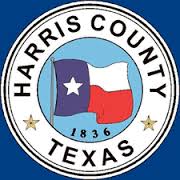Harris County wants to implement a program that would look at how and where active COVID infection exists, hoping to better understand how the virus spreads within the region in real time, and use those findings to help shape public health policy.
This commonly used public health strategy involves analyzing representative samples of the population to get a better picture of how the virus is acting rather than just looking at overall infection numbers in the hopes that such data could help single out and address hotspots. By understanding the circumstances, occupations and activities that drive community spread, public health officials and legislators would be better equipped to understand the virus and address high-risk COVID communities.
While Harris County COVID testing currently takes place at a number of fixed drive-through and mobile sites, as well as through private and other healthcare providers, the program, known as surveillance testing, would provide data at the community-level that broadens data collection beyond those actively seeking out testing for possible infection. This type of survey would also help obtain data on asymptomatic cases.
How the county will implement the program has not been determined. A committee has been in the process of reviewing proposals from organizations that submitted applications to conduct the study. Each proposal must outline a plan — including collection strategy, finances and other project details.
Surveillance testing programs generally involve recruiting participants for a medical test as well as having them complete a questionnaire or additional survey, explained Dr. Rebecca Fischer, epidemiologist and assistant professor at Texas A&M’s School of Public Health. This information could be collected by going door-to-door, setting up an outdoor site, or recruiting participants through a website.
“A community surveillance testing program could really be a game-changer if done correctly,” Dr. E. Susan Amirian, epidemiologist at the Texas Policy Lab at Rice University, wrote in an email. The group was approached by County Judge Lina Hidalgo’s office to help officials better understand the epidemiological and scientific aspects of such a project. The Harris County Public Health Department has also been involved in an advisory role, said the department’s media specialist Martha Marquez.
With no national community-level COVID surveillance testing program in place, states, counties and universities have taken it upon themselves to conduct these kinds of “surveillance tests” to learn more about how the virus acts and spreads in their communities. Current reporting tactics are considered “passive” surveillance since they rely on people actively seeking diagnosis, said Fischer.
There’s more, and you should read the rest, but stop and focus for a minute on the first sentence of that last paragraph. Why, exactly, is there “no national community-level COVID surveillance testing program in place”? I mean, we know the answer to that question, but the point is that in the midst of the non-stop chaos and sabotage and authoritarianism, we’re still asking the same questions, making the same arguments, and waiting for the same basic things as we were six months ago. We should maybe try not to forget that.

